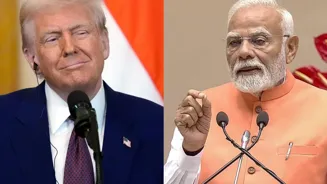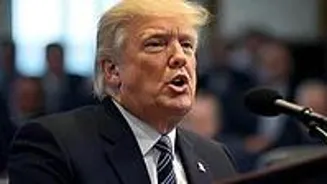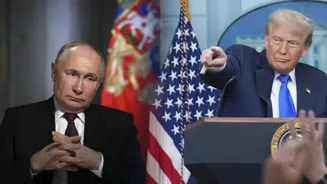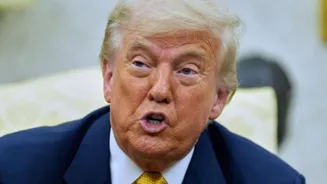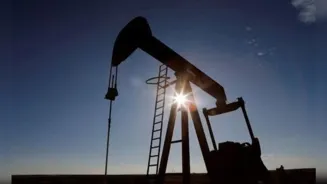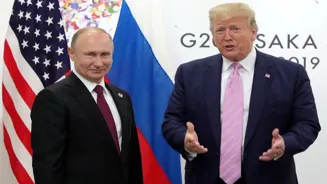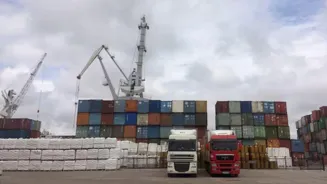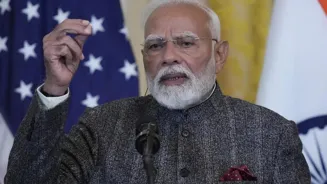When US President Donald Trump launched a fresh attack last night on India for buying discounted Russian oil and profiting from reselling it on the open market, his rhetoric echoed a broader Western narrative
that has long sought to corner India on the Ukraine issue.
But trade data from Europe and America tells a different story, one that shows the critics themselves continue doing significant business with Russia. From gas and fertilisers to uranium and aircraft parts, both the European Union and the United States maintain strategic, if selective, trade ties with Moscow, even after vowing to isolate it over the war in Ukraine.
So how much are the West and India really trading with Russia? What exactly are they buying? And does the criticism of India stand up to scrutiny?
Let’s break it down.
How Do India’s Russia Ties Compare With Europe’s?
India’s trade with Russia, primarily centred on deeply discounted oil, totalled around $66-70 billion in 2023-24. This figure has grown since the start of the Ukraine war, driven largely by India’s efforts to ensure affordable energy access for its 1.4 billion citizens.
But compare that to EU-Russia trade, which stood at a whopping $92.2 billion (€84.6 bn) in 2023, and the scale of Western hypocrisy begins to emerge.
Even EU energy payments to Russia alone tell a revealing story. According to data from the Centre for Research on Energy and Clean Air (CREA), the EU paid €21.9 billion ($25.4 bn) for Russian oil and gas in 2023, more than what it provided to Ukraine in aid during the same period (€18.7 billion or $21.7 bn).
In short, Europe paid more to Russia than it gave to Ukraine.
What Is The US Accusing India Of?
Trump’s charge is blunt: that India is buying massive amounts of Russian oil and selling it on the open market for big profits. In his posts on Truth Social, he said, “Because of this, I will be substantially raising the Tariff paid by India to the US,” adding to an existing 25 per cent duty as a penalty for India’s continued trade with Moscow.
But India hit back swiftly. In a measured statement, the Ministry of External Affairs (MEA) clarified that India began buying Russian crude only after its traditional suppliers diverted oil to European markets in the wake of sanctions.
“The United States at that time actively encouraged such imports by India for strengthening global energy markets stability,” the MEA said, calling out the “selective criticism” now being levelled at New Delhi.
Petroleum Minister Hardeep Singh Puri underlined the point in a CNBC interview, saying: “That was a situation in which we were advised, including by our friends in the United States, to please buy Russian oil, but within the price cap.”
Even former US Ambassador Eric Garcetti had publicly acknowledged that Washington had encouraged India to buy Russian oil in the early phase of the war to keep global energy markets steady.
So Who Else Is Buying From Russia?
India is far from alone. According to CREA:
- The European Union remains the largest buyer of Russian liquefied natural gas (LNG), accounting for 51 per cent of Russia’s LNG exports.
- EU also buys 37 per cent of Russia’s pipeline gas.
- Turkey, a NATO member, is the top buyer of Russian oil products, with a 26 per cent share of Russia’s exports in that category.
Since the war began in 2022, EU countries have paid between $215–235 billion to Russia for fossil fuels, compared to $200 billion pledged to Ukraine.
Not only does EU-Russia trade exceed India’s, it’s also more diverse. While India’s imports are mostly energy-related, Europe continues to buy:
- Chemicals
- Fertilisers
- Iron and steel
- Mining products
- Fishery and agricultural goods
And exports to Russia include:
- Pharmaceuticals
- Transport equipment
- Machinery and industrial tools
What About The United States? Isn’t It Isolating Russia?
While Washington has restricted several categories of trade, it continues to import strategic goods from Russia, especially those where alternatives are hard to find.
In 2024 alone, US imports from Russia stood at $3 billion, down from $36 billion in 2021, but key items like uranium, fertilisers, and palladium remain untouched.
According to the US International Trade Commission, here’s what the US bought from Russia in 2024:
- Fertilisers: $1.1 billion
- Palladium: $878 million
- Uranium: $624 million
- Aircraft engine parts: $75 million
- Wood and timber products: $89.4 million
- Machinery and reactors: $80.8 million
- Industrial and agricultural chemicals: Over $600 million
- Food and animal feed products: Over $50 million
Even in 2025, this trade is on the rise. Between January and May, US imports from Russia grew 23 per cent year-on-year, with:
- Palladium imports up 37 per cent
- Uranium up 28 per cent
- Fertilisers up 21 per cent
Notably, the US continues to rely heavily on Russian uranium for its nuclear power plants. The US Trade Representative has admitted that some of these critical imports are shielded from full sanctions due to the lack of viable global alternatives.
So while crude oil imports from Russia have mostly stopped, other high-priority trade continues, especially in energy-related materials.
Does The West Have Grounds To Criticise India?
This is the central question, and the data offers a clear answer.
India’s energy trade with Russia:
- Began after 2022, when Western sanctions reshaped global supply chains.
- Was encouraged by the West to avoid oil price shocks.
- Is focused almost entirely on crude oil at discounted rates, serving domestic affordability goals.
Meanwhile, Europe and the US:
- Continue diverse and often high-value trade with Russia.
- Maintain imports of nuclear fuel, gas, palladium, fertilisers, and strategic metals.
- Have, in some cases, paid more to Russia than they’ve given Ukraine in aid.
In this context, India’s trade is not an outlier; it’s part of a broader, global pattern of selective engagement with Russia, even as the war grinds on.
So Why Target India?
Observers believe Trump’s rhetoric may have more to do with domestic politics and trade leverage than India’s actual role in the Ukraine conflict.
Blaming India allows him to:
- Justify new tariffs to protect US manufacturers.
- Project strength against countries seen as taking advantage of global markets.
- Deflect attention from his own administration’s challenges with Russia and Ukraine.
But in the process, it exposes a double standard, one that overlooks America’s own quiet trade with Moscow, while painting India as the villain.
Bottom line
The numbers don’t lie. Europe and America may talk tough on isolating Russia, but their own trade with Moscow tells a more complex and often contradictory story. If India is to be judged, it shouldn’t be by a different yardstick.
